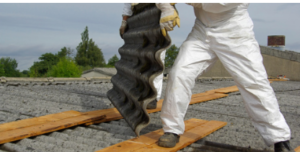Asbestos was commonly used in older homes across Adelaide and South Australia. The material poses a health risk if it becomes airborne, as it can lead to asbestosis, lung cancer and mesothelioma.
 Anyone who may disturb or come into contact with ACM must undertake asbestos awareness training. It includes building surveyors, hazard assessors, contractors and workers whose duties involve entering ceiling cavities. For more information about the asbestos inspection certification Adelaide, click here.
Anyone who may disturb or come into contact with ACM must undertake asbestos awareness training. It includes building surveyors, hazard assessors, contractors and workers whose duties involve entering ceiling cavities. For more information about the asbestos inspection certification Adelaide, click here.
What is an Asbestos Inspection?
Asbestos is a fibrous mineral widely used in the past for its strength, fire resistance and insulating qualities. It was woven into fabrics, used in floor tile and surface coatings, mixed with cement, and sprayed on pipe lagging and boiler insulation. Asbestos exposure has been linked to a variety of health problems, including lung cancer and mesothelioma.
An asbestos inspection involves the sampling of suspect materials and a laboratory analysis. The survey is usually done before demolition or renovation works begin to avoid disturbing regulated materials.
How Does an Asbestos Inspection Work?
Asbestos is a naturally occurring mineral used in buildings and bridges for its heat, chemical resistance, and insulating properties. It is a dangerous carcinogen when airborne and can cause serious health problems such as lung disease and mesothelioma.
Undamaged asbestos-containing material poses little risk but is dangerous when disturbed. That is why it is essential to hire professionals trained in correctly handling specific products containing asbestos and can provide an appropriate correction or abatement plan if necessary.
What Are the Benefits of an Asbestos Inspection?
Asbestos is a naturally occurring mineral used for its heat and chemical resistance properties in textiles, attic insulation, floor tiles, surface coatings and pipe wrapping. Asbestos exposure can significantly cause various health problems, including scarring and inflammation of the lungs, lung cancer and mesothelioma. The safest way to protect yourself and your property from hazardous asbestos is to have a professional asbestos inspection.
An asbestos survey can reveal whether or not your home or business contains ACM before any renovations are undertaken. If ACM is found, you can take precautions during construction and renovation work to prevent exposure.
You should also have an asbestos survey done if you are considering purchasing an older building, as asbestos may be present in the walls, ceilings and flooring of buildings built before the 1980s. An asbestos survey can also benefit commercial property owners preparing to renovate their premises.
Why Should I Have an Asbestos Inspection?
Asbestos is a toxic material that poses serious health risks if released into the air. It can be inhaled and lead to various diseases, including pleural thickening (thickening of the lining of the lungs). For more information about the asbestos inspection certification Adelaide, click here.
An asbestos inspection is necessary if you’re planning to do any renovations or home improvements on an older property. Older homes and buildings are positively more likely to contain asbestos in walls, flooring and roofing.
While you can test some materials yourself, experts recommend that a professional takes samples and sends them away for analysis. That is because removing and disturbing a suspect material releases fibres into the air, which can pose more of a risk than simply leaving the material alone.
In addition, sampling regulations require specific numbers of samples from each type of material. A trained inspector is best equipped to know how many samples are needed. They will also document the locations of the samples. These samples are then immediately sent to an accredited laboratory for analysis.
Asbestos sampling is an important part of the inspection process, and various rules dictate how many samples must be taken from each type of material. An analogy often cited is that of the chocolate chip cookie: you must take at least one bite from each row and column of chocolate chips to get an accurate picture of the entire cookie.
